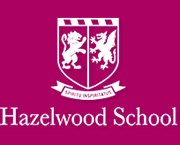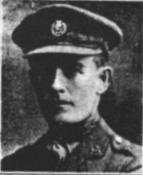
War Memorial
| Captain Charles Harold ROBIN | |
|
2nd Battalion, Royal Jersey Militia attached to the 13th (Service) Battalion, York and Lancaster Regiment (1st Barnsley) Date of birth: 17th May 1886 Date of death: 11th May 1917 Killed in action aged 30 Buried at Albuera Cemetery, Bailleul-Sire-Berthoult South Row C Grave 5 |

|
| Charles Harold Robin was born at 62, Courtfield Gardens, South Kensington in London on the 17th of May 1886 the elder son of Charles Janvrin Robin, barrister-at-law and banker, and Henrietta Magdalen (nee Robin) Robin of 62 Courtfield Gardens, and of Steephill in Jersey. He was christened at St Jude's Church, South Kensington on the 18th of May 1886. He was educated at Hazelwood School until July 1900, where he was a member of the 2nd Football XI in 1898 and of the Cricket XI in 1899 and 1900. The school magazine wrote the following of his 1899 cricket season: - "One of the most deserving and painstaking cricketers we ever had the pleasure to teach. Has one or two terribly difficult peculiarities of style to overcome, notably an inclination to try to cut a straight half volley; but will do well, as he is as keen and persevering as one could wish. A good bowler when he pitches them up, and a hard working field, also sometimes makes a brilliant catch." They wrote of his 1900 cricket season: - "Has greatly disappointed the expectations of his friends by his want of success this year. Keen and industrious as ever, and as smart in the field. His bowling has sometimes been useful." He was a member of the Football XI in 1899 when the school magazine wrote: "(Left half) - Somewhat slow and might do a bit more charging, but persevering in his attempts to feed forwards. Wants to mark his enemy more persistently." On leaving the school the magazine wrote of him: - "Goes to Charterhouse. Has been a member of both XIs. Has figured successfully before the footlights." He went on to Charterhouse School where he was in Hodgsonites from September 1900 to July 1905. He went on to University College Oxford in 1905 where he studied law. He was commissioned as a 2nd Lieutenant in the Royal Militia of the Island of Jersey on the 18th of May 1906, was promoted to Lieutenant on the 1st of June 1910 and to Captain on the 30th of August 1913. He was commissioned as a 2nd Lieutenant in the 1st Battalion, Royal Fusiliers (City of London Regiment) on the 16th of December 1908. He was admitted to the Military Hospital, Curragh Camp on the 13th of May 1910 suffering from acute pain in his back, below the right scapula. He had been prone to such attacks in the past. On the 9th of July 1910 he underwent an operation on his gall bladder which involved suturing it to the abdominal wall and the insertion of a drainage tube. On the 15th of December 1910 he applied to resign his commission due to ill health and left the army on the 14th of January 1911. On the 17th of September 1913 he was married to Yvonne (nee Lempriere later Riley) at Rozel Manor Chapel in Jersey with his brother Guy acting as best man and his sisters Ethel and Enid acting as bridesmaids. They lived at Seymour House, Gorey, Jersey, where they had a son, Charles who was born on the 6th of September 1914. On the outbreak of war he rejoined the Jersey Militia and, on the 2nd of September 1915, he was attached to the York and Lancaster Regiment, serving with them in Egypt and then in France. He was appointed as Battalion Adjutant. On the night of the 4th/5th of May 1917 the 13th Battalion York and Lancaster Regiment moved into support trenches near Gavrelle Windmill where they relieved the 16th Battalion West Yorkshire Regiment. They immediately set to work digging a communication trench up to Windmill Spur which overlooked the German lines to the north east of Oppy. The Germans were intent on making it difficult for them and all day their trenches were "drenched with German high explosives and machine gun fire" For three days the shelling continued unabated and losses began to mount. It was almost impossible to move wounded out or get supplies in. The newly dug trenches offered little protection as they were unsupported by British artillery and "consisted of little more than a chain of shell holes connected by hastily scratched trenches". Charles Robin was killed by a shell on the 11th of May and the battalion was relieved by the 11th Battalion East Lancashire regiment the following day. The General Officer Commanding Jersey received the following telegram dated the 15th of May 1917: - "Please notify next of kin. Deeply regret inform you Capt. C.H. Robin 2nd Royal Jersey Militia attached York and Lancaster Regiment was killed in action May eleventh. The Army Council express their sympathy." His Commanding Officer wrote of him:- "He was always ready to go anywhere and do anything, utterly unselfish and continually helping others in any way he could." Another wrote "I had the greatest admiration for the way he carried out his work without any idea of sparing himself." He was a prominent member of the Victoria Club in Jersey. A memorial service was held in his memory at St Saviours Parish Church on the 30th of May 1917. He is commemorated on a plaque at St Saviour's Church, Jersey, on a plaque at Rozel Manor Chapel, Jersey and on the war memorial at Charterhouse School. |
|
| Went on to Charterhouse School |
Back